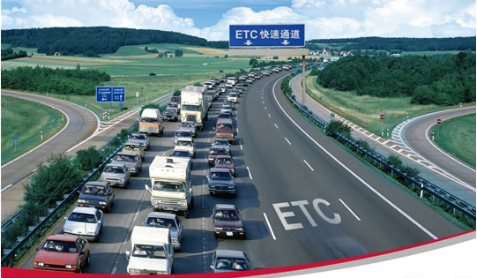Online burning application in the automotive electronics industry
Abstract: The annual Spring Festival drama is about to be staged, and the office’s friends are starting to grab train tickets. Defeat the verification code of 99% of the ticket-sellers, making it harder to grab tickets. Xiaobian's hometown is remote, and he can only go home by car every year. Although he does not have to suffer from the ticket rush, he thinks of the scene of high-speed blocking of the growth of the dragon, and his heart is also bitter and bitter.
This article refers to the address: http://
The annual Spring Festival drama is about to be staged, and the office’s friends are starting to grab train tickets. Defeat the verification code of 99% of the ticket-sellers, making it harder to grab tickets. Xiaobian's hometown is remote, and he can only go home by car every year. Although he does not have to suffer from the ticket rush, he thinks of the scene of high-speed blocking of the growth of the dragon, and his heart is also bitter and bitter. It is gratifying to note that in order to solve the phenomenon of queued traffic jams caused by traditional manual parking charges and improve the efficiency of expressway traffic, the Ministry of Transport has vigorously promoted ETC construction in recent years and requested to achieve ETC national networking by the end of 2015.

Introduction to ETC
The Electronic Non-Parking Toll System (ETC) is currently the most advanced road and bridge charging method in the world. Through the microwave-specific short-range communication (DSRC) installed on the windshield of the vehicle and the microwave antenna between the microwave antenna on the ETC lane of the toll station, the computer network technology is used to perform background settlement processing with the bank. There is no need for parking or quick transactions when the vehicle passes through the road and bridge toll booth. Compared to the manual toll collection system (MTC), the electronic toll collection system (ETC) has obvious advantages:
1. Compared with the 8 second ticket issued by the manual toll collection system (MTC), the ETC passes only 1 second to 2 seconds, and the lane capacity is increased by 4 to 6 times.
2. No need for cash transactions, convenient and fast
3. Effectively reduce the operation and management costs of toll stations
4. Reduce noise pollution and exhaust pollution at toll stations

Challenges and opportunities coexist
With the non-stop charging system (ETC) basically achieving nationwide networking, hardware vendors offering upstream and downstream ETCs are also welcoming unprecedented opportunities. It is predicted that there will be nearly 10 million sets of automotive electronic tags (OBU) in 2016.
The leading company in the domestic ETC industry, OBU annual sales reached several million sets. In the latest OBU, they use the Cortex-M3 core chip of a well-known MCU manufacturer as the master MCU. In mass production, they use the online programming method to batch-program the MCU on the PCB. Like:

During the burning process, the customer found that the burning rate was very low, and often the inexplicable burning failed. Thousands of sets of production capacity per day, low-yield production, so that the production department in the burning process is helpless. To improve productivity and burn stability, customers request technical support.
When engineers used the four-channel online programmer P800-ISP to program the customer prototype, they found that the phenomenon was exactly the same as the customer said. With a wealth of experience in programming and debugging, our engineers positioned the problem as the chip was mishandled, resulting in encryption. After consulting the chip technical manual, the root source was locked to two registers.
In order to solve this problem, the engineer modified the timing code of the P800-ISP accordingly. Before performing the erase and program operations, the order of the two registers was adjusted to make the MCU in the decrypted state, ensuring that the chip is in the programming process. It will not be encrypted by mistake.

After using the updated timing P800-ISP to burn the MCU, the customer's automotive electronic tag (OBU) burning efficiency and yield rate have been significantly improved, and millions of OBU mass production is no longer difficult.
A Lithium Polymer Battery, or more correctly lithium-ion Polymer Battery (abbreviated as LiPo, LIP, Li-poly, lithium-poly and others), is a rechargeable battery of lithium-ion technology using a polymer electrolyte instead of a liquid electrolyte. High conductivity semisolid (gel) polymers form this electrolyte.High power. Both lithium-ion and lithium-poly batteries are suitable with high and robust power usages. However, lithium-ion batteries are more efficient and popular than lithium-polymer.Many manufacturers have stated that their LiPo batteries will last 2 or 3 years. This is a somewhat realistic approximation for a scenario where a battery is regularly used and charged around 2 or 3 times a week.Lithium polymer batteries could potentially be dangerous. ... However, if care is taken to store the batteries properly, Lithium batteries shouldn't be very dangerous at all. Additionally, Lithium polymer batteries should be even safer than traditional Lithium batteries.Lithium Polymer batteries are perhaps the most hazardous parts we deal with on a day to day basis when it comes to our miniquads. This is both because of their propensity to explode into a small fireball when mistreated and because of the massive amount of power they are capable of dumping out of their terminals.
Li-Polymer Battery,Polymer Battery,Phosphate Battery Lifepo4 Battery,Polymer Lithium Battery
Shenzhen Glida Electronics Co., Ltd. , https://www.szglida.com